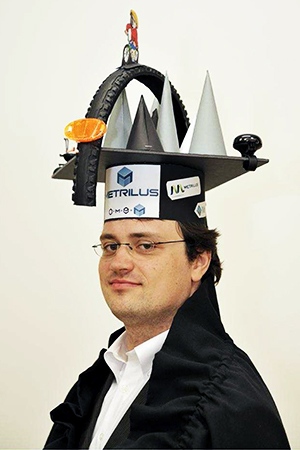Michael Balda
Quantitative Computed Tomography
Abstract
Computed Tomography (CT) is a wide-spread medical imaging modality. Traditional CT yields information on a patient’s anatomy in form of slice images or volume data. Hounsfield Units (HU) are used to quantify the imaged tissue properties. Due to the polychromatic nature of X-rays in CT, the HU values for a specific tissue depend on its density and composition but also on CT system parameters and settings and the surrounding materials. The main objective of Quantitative CT (QCT) is measuring characteristic physical tissue or material properties quantitatively. These characteristics can, for instance, be density of contrast agents or local X-ray attenuation. Quantitative measurements enable specific medical applications such as perfusion diagnostic or attenuation correction for Positron Emission Tomography (PET).
This work covers three main topics of QCT. After a short introduction to the physical and technological basics for QCT, we focus on spectral X-ray detection for CT. Here, we introduce two simulation concepts for spectral CT detectors, one for integrating scintillation and one for directly-converting counting detectors. These concepts are tailored specifically for the examined detector type and are supported by look-up tables. They enable whole scan simulations about 200 times quicker than standard particle interaction simulations without sacrificing the desired precision. These simulations can be used to optimize detector parameters with respect to the quality of the reconstructed final result. The results were verified with data from real detectors, prototypes and measuring stations.
The second topic is QCT algorithms which use spectral CT data to realize QCT applications. The core concept introduced here is Local Spectral Reconstruction (LSR). LSR is an iterative reconstruction scheme which yields an analytic characterization of local spectral attenuation properties in object space. From this characterization, various quantitative measures can be computed. Within this theoretical framework, various QCT applications can be formulated. This is demonstrated for quantitative beam-hardening correction, PET and SPECT attenuation correction and material identification.
The final part is dedicated to noise reduction for QCT. In CT noise reduction is directly linked to patient dose saving. Here, we introduce two novel techniques: Firstly an image-based noise reduction based on joint histograms of multi-energy data-sets. This method explicitly incorporates the typical signal properties of multi-spectral data. We demonstrate a dose saving potential of 20% on real and synthetic data. The second method is a non-linear filter applied to projection data. It uses a point-based projection model to identify and preserve structures in the projection domain. This principle is applied to a modified bilateral filter, where the photometric similarity measure is replaced with a structural similarity measure derived from this concept. We examine the properties of this filter on synthetic and real patient data. We get a noise reduction potential of about 15% without sacrificing image sharpness. This is verified on synthetic data and real phantom and patient scans.
